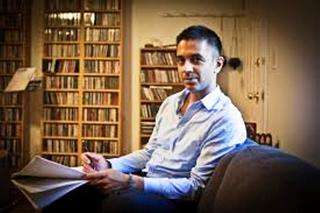|
Back
The Art of Andre Watts New York
Isaac Stern Auditorium Carnegie Hall
10/26/2017 -
Vijay Iyer: Asunder (New York premiere)
Wolfgang Amadeus Mozart: Piano Concerto No. 9 in E-flat Major (“Jeunehomme”), K. 271
Ludwig van Beethoven: Symphony No. 1 in C Major, Opus 21
André Watts (Piano)
Orpheus Chamber Orchestra

A. Watts (© BSO Music.org)
After six decades on the concert stage, André Watts still has those young-man hands to tackle Mozart’s “Jeunehomme” Concerto in style. As he did last night with the Orpheus Chamber Orchestra.
Mind you, Mozart never called the 9th Concerto “young man.” It was written actually for a young woman, and Mozart, at age 21 was relatively middle-aged. But the misunderstanding of a word in his letters gave the publisher leave for the current appellation. Audiences who expect a youthful picture, though, are bound to be disappointed.
Mr. Watts, though, has the disposition to conquer this somewhat monumental concerto. I first heard him many decades ago in Bangkok, later in Hong Kong, and have always been impressed with his serious steady temperament, and his his careful non-idiosyncratic performances.
That was true last night when Mr. Watts showed his experience in a first movement which captured Mozart’s grandeur. And that, despite its cognomen, is exactly what is necessary. For its time, that second-measure piano introduction was quite revolutionary, but Mozart wasn’t aiming to overturn Classical ideals. Perhaps at his age, he simply wanted to–needed to–raise the artist from the musician.
Mr. Watts is a splendid musician, and from those first measures, from the opening trill under the orchestra, he gave voice to this movement. If it seemed monochromatic, it also verged on the monumental. Mr. Watts is not one to take liberties, but this score doesn’t allow for much freedom. Mozart–and Watts–gave this cadenza the power it deserved.
The second movement was another milestone for the composer, and played here with the simplest lyricism. That final coda with the Orpheus Orchestra was purely elegance.
And if it hadn’t been for the clap-happy audience, we could have heard a riotously joyful opening to the finale. At any rate, Mr. Watts sailed through his numerous solo parts all the way to the strange minuet. I always thought Mozart wrote it almost like a parody of a courtly dance for his French benefactor, but Mr. Watts played it straight, as was his right. For after these first 60 years, he deserves to see Mozart with maturity as well as his innate skill.
The Orpheus Chamber Orchestra was at its best during the Beethoven First Symphony after the intermission. That though, was relatively simple next to the opening New York premiere of Asunder co-commissioned by Orpheus with the Saint Paul Chamber Orchestra.

V. Iyer (© MacArthur Foundation)
Vijay Iyer, one of the “genius” beneficiaries of the MacArthur Fellow awards, a three-time “Musician of the Year” by Downbeat Magazine and a jazz performer who has carved out his own avant-garde category as pianist and conductor, was commissioned to write Asunder by Orpheus, and his efforts were...well, interesting.
I dislike using that non-descriptive word, but Asunder didn’t quite get to me. Mr. Iyer gave a graphic description of its purpose, to “respond to our era of disunity...to strive for synchronies of movement, sturdy resonances, structural accumulations and an ear toward pleasure.”
He came close to all of the above, mainly eschewing his jazz background. The “Agitated” first movement was less agitated than with the Steve Reich feeling of locomotion, repetition leading toward anarchy but thankfully pulling back. The second movement “Patient and mysterious” had a beautiful opening, a sort of modulated jazzy tempo, and, while hardly mysterious, was quite lovely.
The third movement, “Calm and Precise Like Clockwork” was almost fascinating. The word “gimmick” is unfair, but Mr. Iyer did use a technique of the instruments of the orchestra endlessly overlapping each other. It was complex, fascinating, obviously produced by a person who knows how to compose. But in thinking about the “how” instead of the “what” was a loss. The final “Lush” was quite rich in its own way, starting with an oboe solo and continuing the “unity” of sounds for which Mr. Iyer was aiming.
It is presumptuous to say this, but I had the feeling that the composer, for all his great talents, was composing with great efforts, which one felt throughout, though the underlying mystery of creation was buried deep inside the score.
The Orpheus Chamber Orchestra of course can master the most challenging new work. But to hear their precision in the highly involved third movement was most impressive.
Harry Rolnick
|